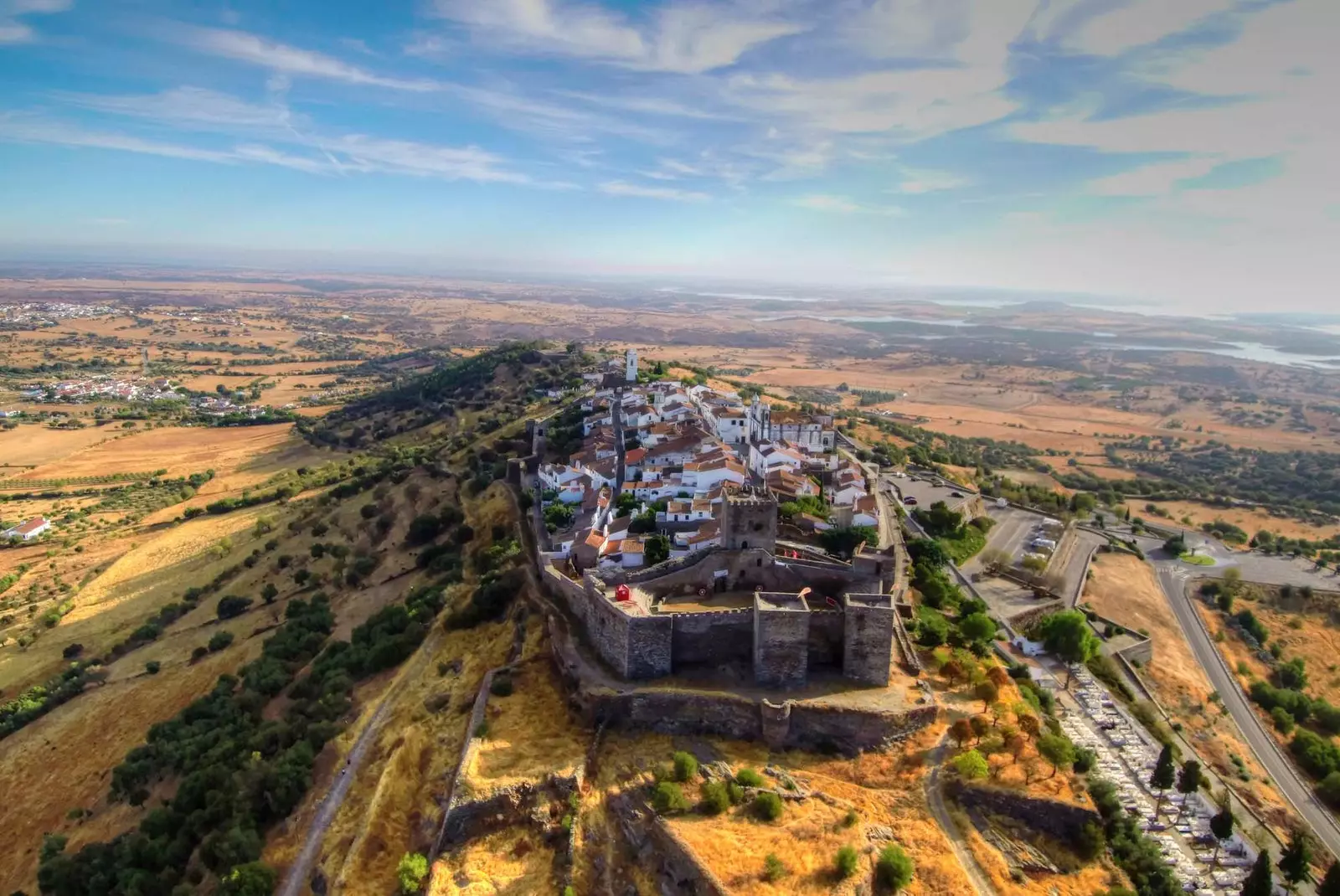
The Alentejo as you have never seen it before
A stone's throw from the Spanish border and less than **200 kilometers from Lisbon** this area of the Alentejo Portuguese that keeps all the charm of the past and in which you can find fortress cities, palaces, wineries and enormous lakes, and that hides in its entrails one of the marble veins purest in the world.
Starting with Vila Vicosa , a town that lives precisely because of and for marble -and which is located only 50 kilometers from the Extremaduran town of Olivenza- , we propose a tour that will allow us to learn a little more about this Portuguese region, twin of the Spanish Extremadura.
Separated from the neighboring country by the Guadiana line and the reservoir of Alqueve -which, despite being one of the youngest on the Peninsula, was completed in 2002-, has created the largest artificial lake in Western Europe.
Currently, it occupies about 250 square kilometers and is 83 kilometers long. It is an inland sea with even 450 islands, and its jagged shore adds up to more kilometers than the Portuguese coastline . It even has a beach and yacht club but, above all, he paints the landscape with a peculiar scenery in a traditionally arid and dry land.
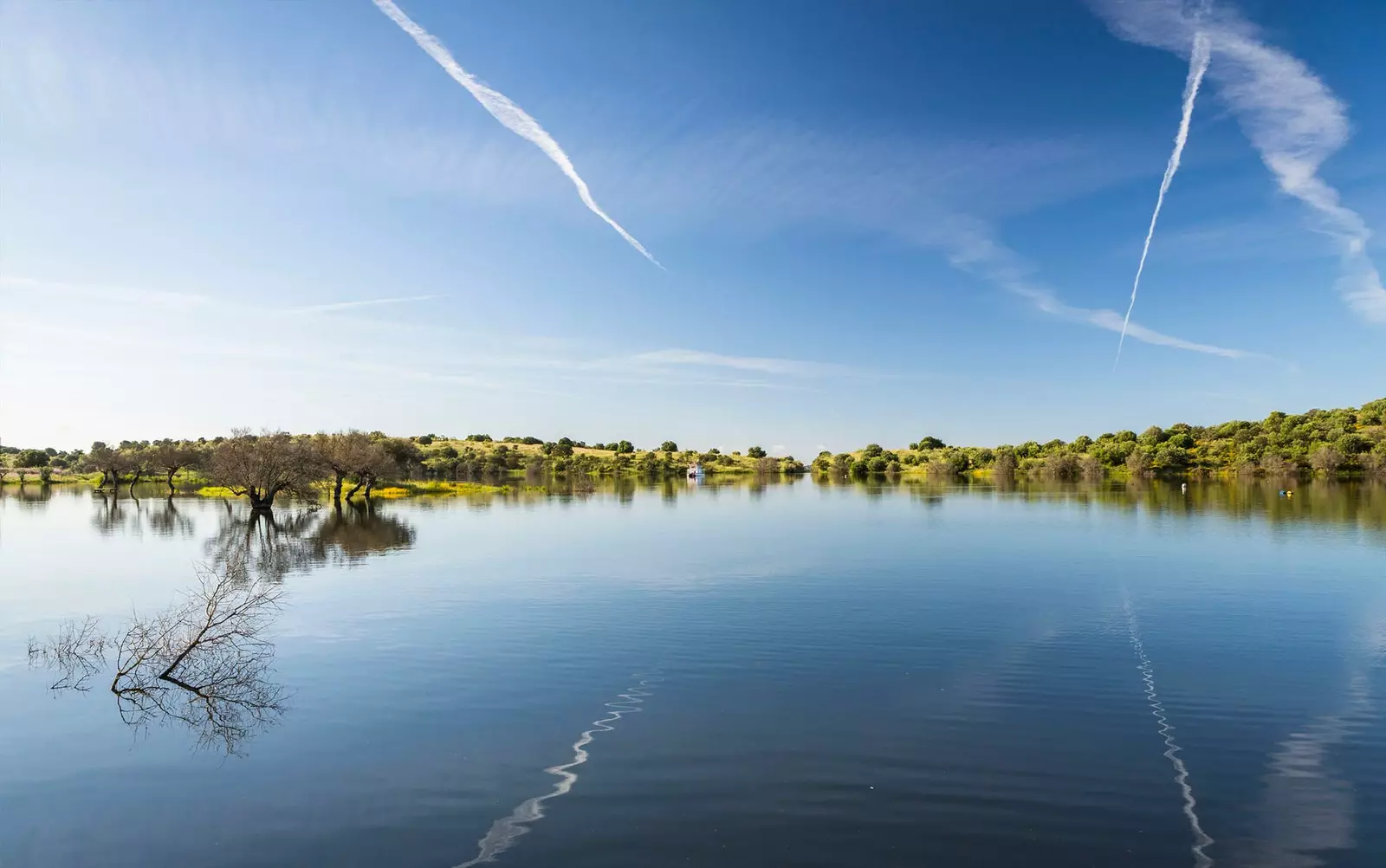
A reservoir like a sea
THE PRINCESS OF ALENTEJO
We chose Vila Viçosa because it is a small and little-known town, but full of interesting treasures to discover. The Portuguese call it ' Princess of the Alentejo ’, and its most outstanding building is its spectacular palace, the Ducal Palace , linked to the dynasty of Bragança (the last one that reigned in Portugal) .
Draw your attention grandiose facade of 110 meters covered with marbles of different colors in perfect balance and elegance.
Inside, you can visit some 50 rooms in which there is furniture, paintings and tapestries that recreate life in the monarchical era, while in the kitchen there is a wide collection of copper utensils So typical of Portugal. Even the room where he spent his last night , in 1908, Carlos I of Braganza Saxony-Coburg, the penultimate king of Portugal.
Carlos left her for Lisbon, where he was shot and died. Today, in front of the palace, the imposing Republic Square , with the floor also marble.
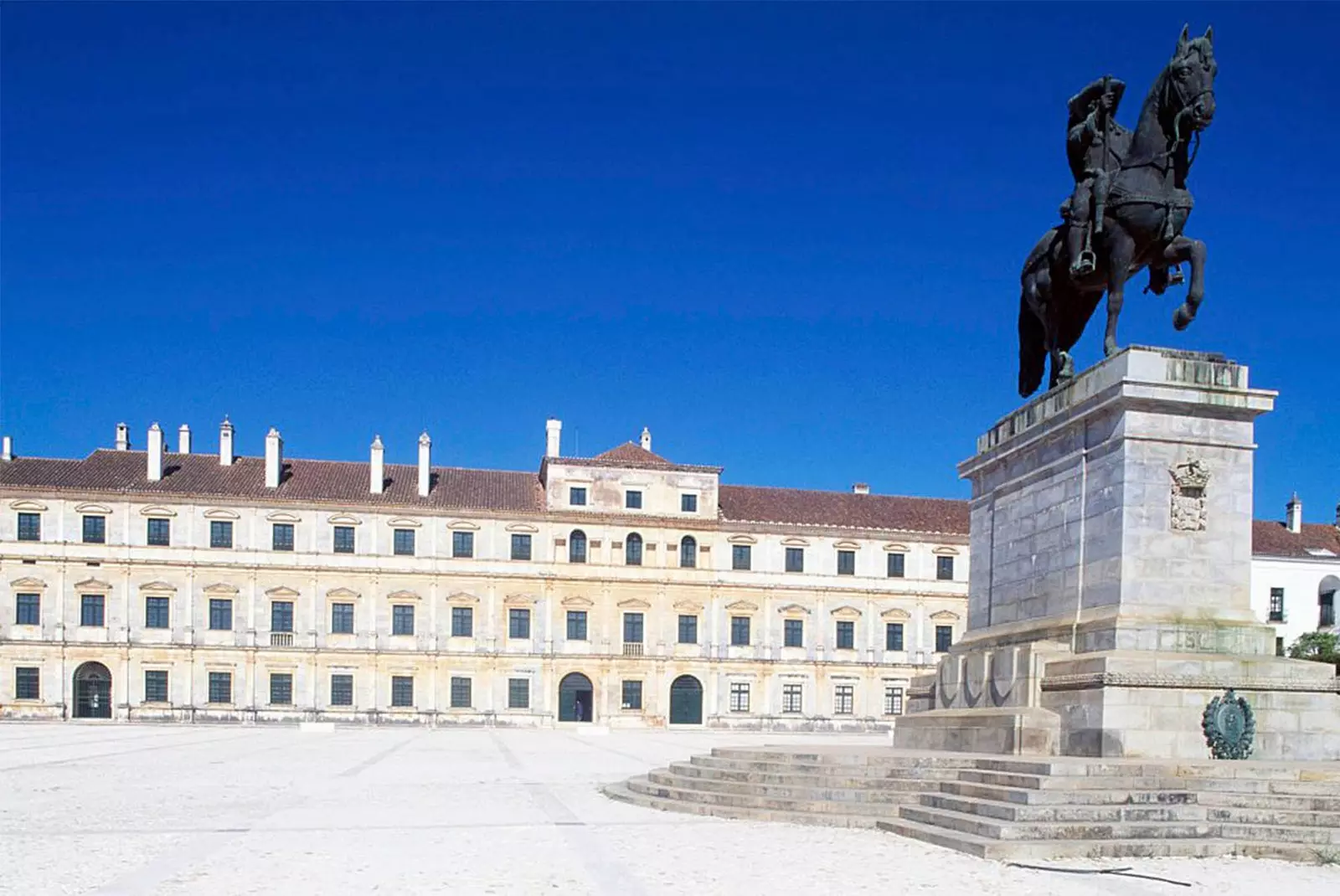
The Republic Square in Vila Viçosa
MARBLE, WHITE GOLD
The old quarter of Vila Viçosa, with its narrow cobbled streets with pieces of marble and whitewashed houses, requires a walk, because around every corner, there is something interesting to see. For example, churches like the one in Saint John the Evangelist, Saint Bartholomew or Lapa ; the convents of the Augustinians and the Capuchins, or a peculiar transept, which there is called pelourinho , also made of marble and topped by a spherical sculpture.
Vila Viçosa is also full of museums . the of carriages, in the basement of the palace; those of hunt and archaeology, in the castle that dominates the town; the one dedicated to sacred art, the ethnography or that of marble. In fact, the recurring presence of marble is not accidental; the high-quality veins that form part of the subsoil in this region have marked your life and your finances since the time of the Romans.
Although next to the palace is the pretty Pousada Dom Joao IV , which occupies a former convent, we chose to stay in the modern Hotel Marmoris Alentejo , with a spa carved into the marble and where the decoration is composed of pieces of this material in its natural state. The goal was also to join the 4x4 excursion that the Free Escape Club organized, in collaboration with Mercedes , to visit some places in the region that are difficult to access otherwise.
JOURNEY TO THE BOTTOM OF THE EARTH
Practicing 4x4, driving on open tracks and firewalls, is now practically impossible in Spain and very difficult in Portugal, although permits are still obtained there for organized excursions how is. We joined her to be able to know, among other things, the bottom of a marble quarry.
Just four kilometers from Vila Viçosa is one of the largest in the region, the Pedreira d'El Rei , which takes its name from mountain that existed before the excavation began. go down to the bottom, 157 meters deep , it takes your breath away, and it can only be done with 4x4 vehicles with reducers due to the terrain conditions.
The workers have been making some spiral paths for those who descend to the bottom with dumpers, quads, cranes and trucks. We talk about some 600 meter descent , with slopes of up to 35 degrees and very slippery by the marble stones -in the upper part there is some asphalt that makes the pavement a little more adherent-.
The background is like a lunar landscape , with a floor formed by a whitish mud that reaches over the ankles and cyclopean walls that begin to take shape. Initially, the marble was extracted Pick and shovel ; with gunpowder and steam engines later, until in the 20s of the last century, it was introduced the helical thread and the perforators.
Currently, marble is cut with diamond wire , which makes the task easier. these marbles, white and pink , they are of high quality and are exported all over the world including India and of course Arab countries.
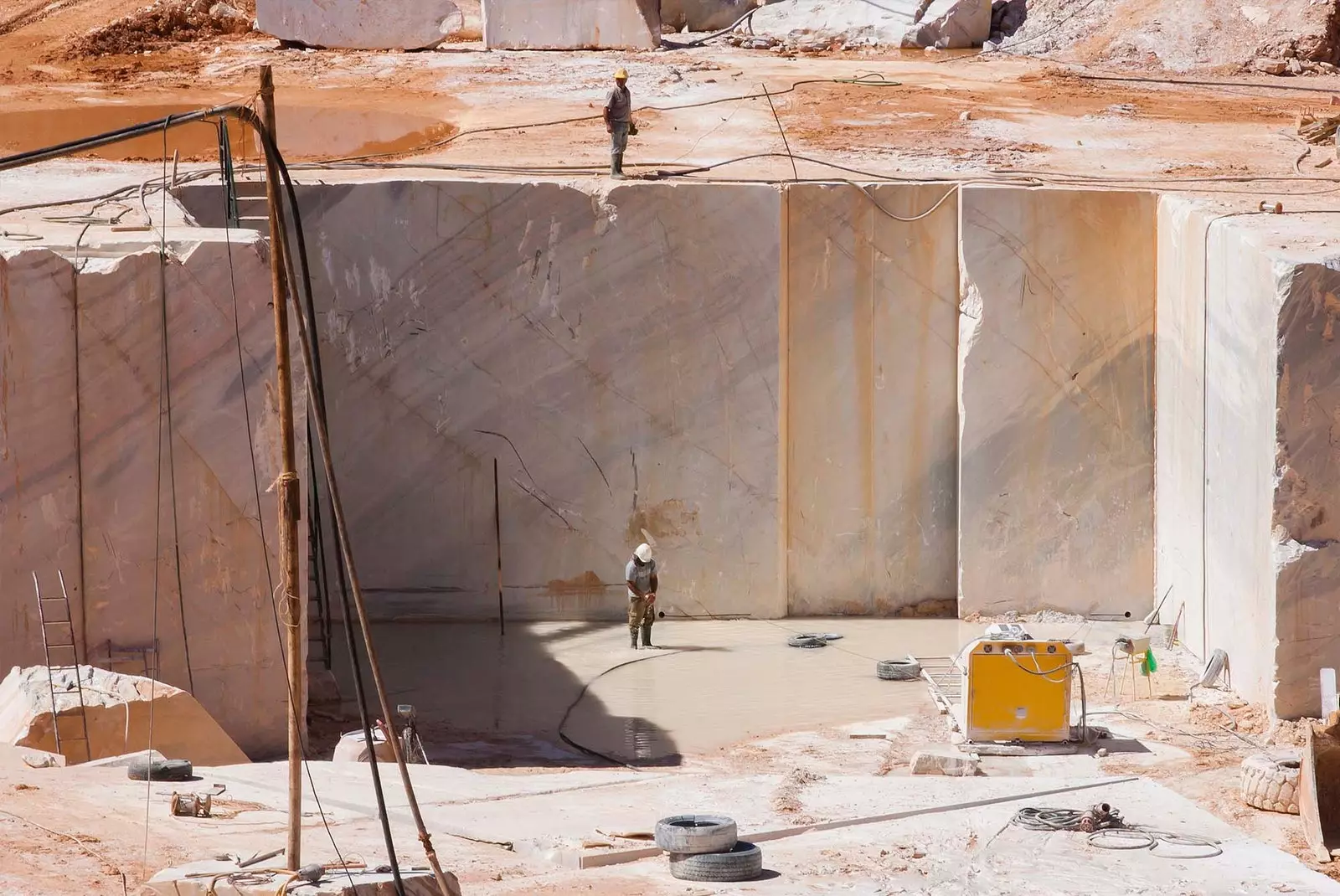
The entrails of marble
Back on the surface, we set off south along the N254 . After about 20 kilometers, a journey of just over half an hour, we arrive at Round . The landscape that accompanies us is similar to what we can find on the other side of the border: large meadows, olive trees and cork oaks with the trunk stripped, then, not in vain Portugal is the world's second largest manufacturer of cork.
To the right of the road unfolds the Sierra d'Ossa , which only rises 650 meters, but covers the landscape with pines and cork oaks. The Alentejo is basically a plain from which small mountain ranges like this one emerge, or simple rocks that played an important defensive role. The 4x4 excursion allows us to go up with the Mercedes 4Matic along the Sierra d'Osssa firebreaks, to the highest point.
But let's go back to Redondo, a town peculiar . It preserves the remains of its past as a city-fortress in the 16th century. fourteenth , the walls and the castle, although now it is more devoted to the oenology as evidenced by its wine museum, which competes with the mud . The latter explains the rise of this handicraft so traditional in Portugal, and at his side, the white and blue churches of the locality stand out as bright.
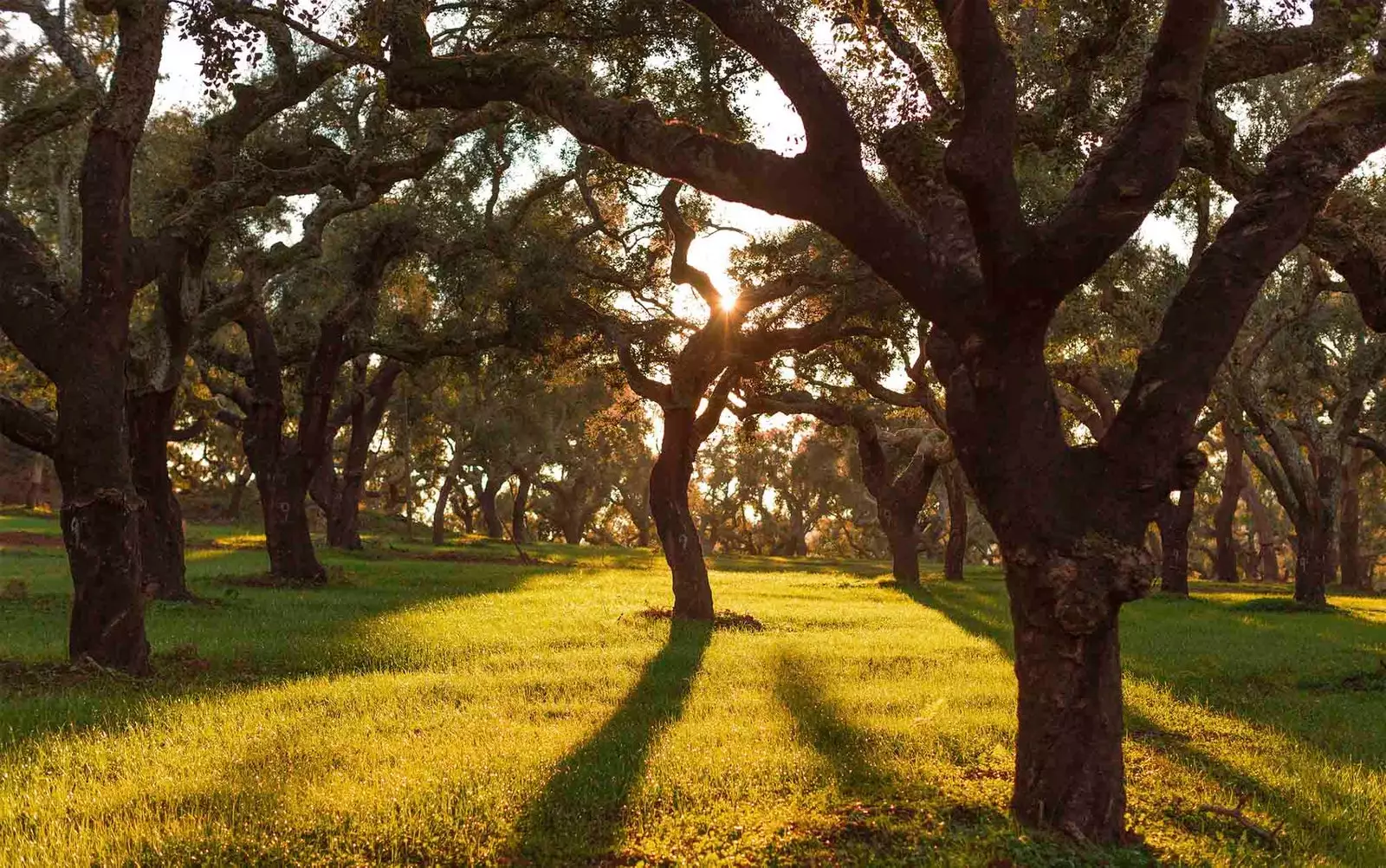
A path of cork oaks
WINE AND GASTRONOMY
We continue south on the N381 until Reguengos of Monsaraz , through 35 kilometers bordering vineyards until reaching the next point of our route, the Herdade do Esporao winery.
It is one of the most important of Portugal, produces wines and oils , and in addition, it has launched a pioneering wine tourism project in the region. Their restaurant, in which they use their own oils and products from their garden with a innovative gastronomic vision It is essential: you must not miss out on trying the grilled octopus with romescu sauce.
The local gastronomy is similar to that of Extremadura, but also different . It has excellent cheeses, olives, oils, wines, pork, lamb and some Alentejo migas that do not contain paprika and are made with local bread, but also use the cod to make some delicious fritters and salads. The Portuguese are Kings cooking the cod
The pezinhos de coentrada (pig trotters) are one of the typical dishes of the region. Another better known is the alentejana pork meat, a pork stew with clams which, curiously, has its origin further south, in the Algarve, where they made it with the best meat they could get, that of Alentejo, where the pigs are raised on acorns.
The route brings us closer to the east along the N256, the road that ends a few kilometers later at the Spanish border, to the reservoir that is crossed, at this point, with bridges from the island to the coast. The detour is worth it, because this area, in addition to being a wonderful place to see stars at night, it is one of the areas of Portugal most focused on off road activities ; It is even part of the national championship.
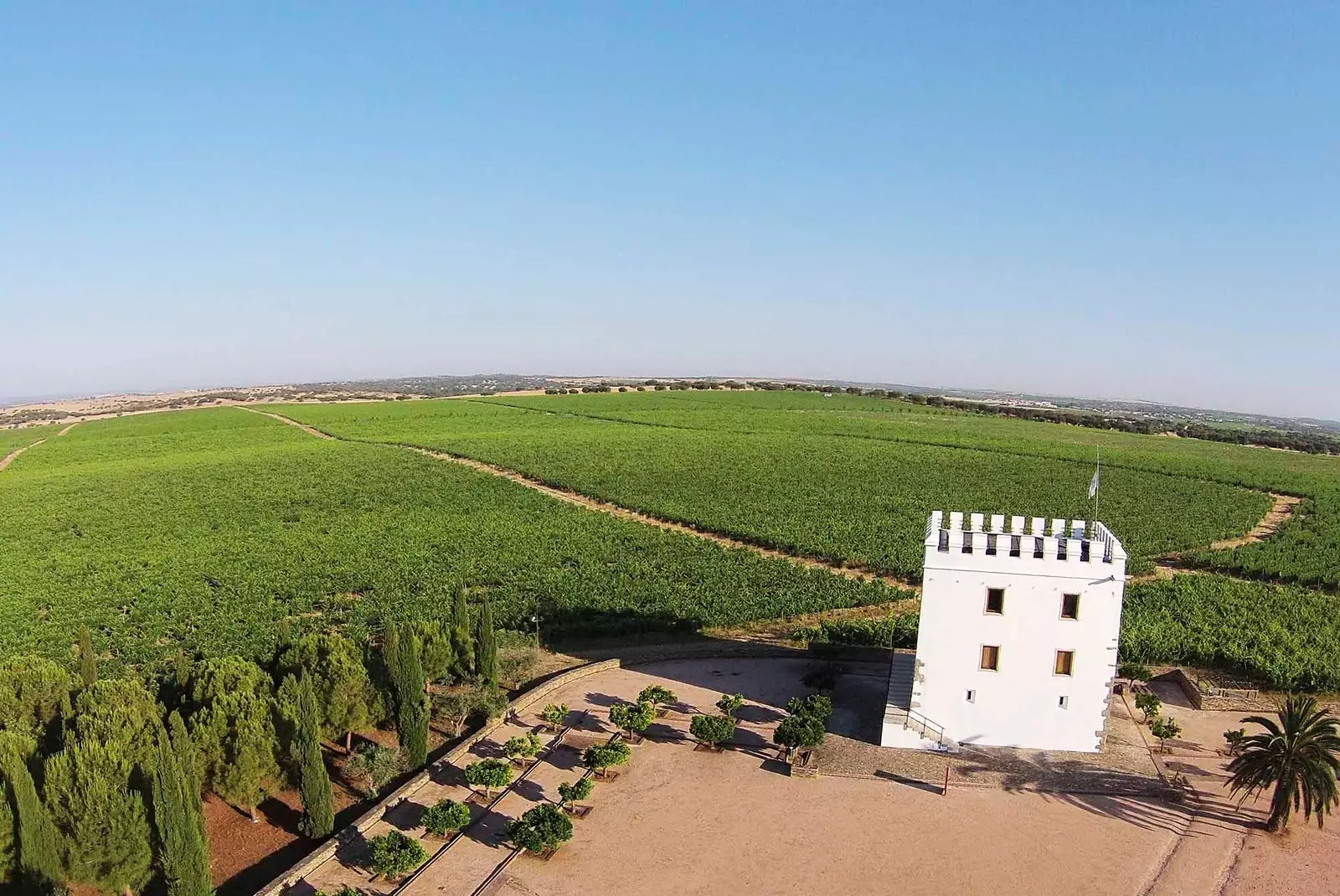
Visit to Herdade do Esporao
NATURAL SCENARIO
Before entering the reservoir, or on the way back, we head north on the M514 and, skirting the riverbank, climb towards Monsaraz through a path with water to the right and left along the jagged shore. The spectacular walled city it is perched on a boulder overlooking the plain to the west and the swamp to the east. Well, now look at the water: a few centuries ago I looked towards the spanish enemy he!
Monsaraz maintains all its charm of medieval city with castle, tower, steep streets and a panorama over the surroundings from a bird's eye view, in what looks like a perfect set for any season of Game of Thrones . For the tourists of the 21st century they have the advantage of a good offer of restaurants and craft shops, and the best corner of the wall to take selfies is even signposted. Let's see if you find it!
We cannot leave this area without visiting Estremoz , another fortress city very similar to Viana do Castello (their entrance gates to the fortress are almost the same!), to the north and over the river Miño. To get there from Monsaraz you have to take the N255 north, travel about 87 kilometers towards Vila Viçosa and then take the N4; we will arrive in only 20 minutes, with the advantage that the town is practically on the A6 , the highway that connects Lisbon and Badajoz, so we can go back in any direction.
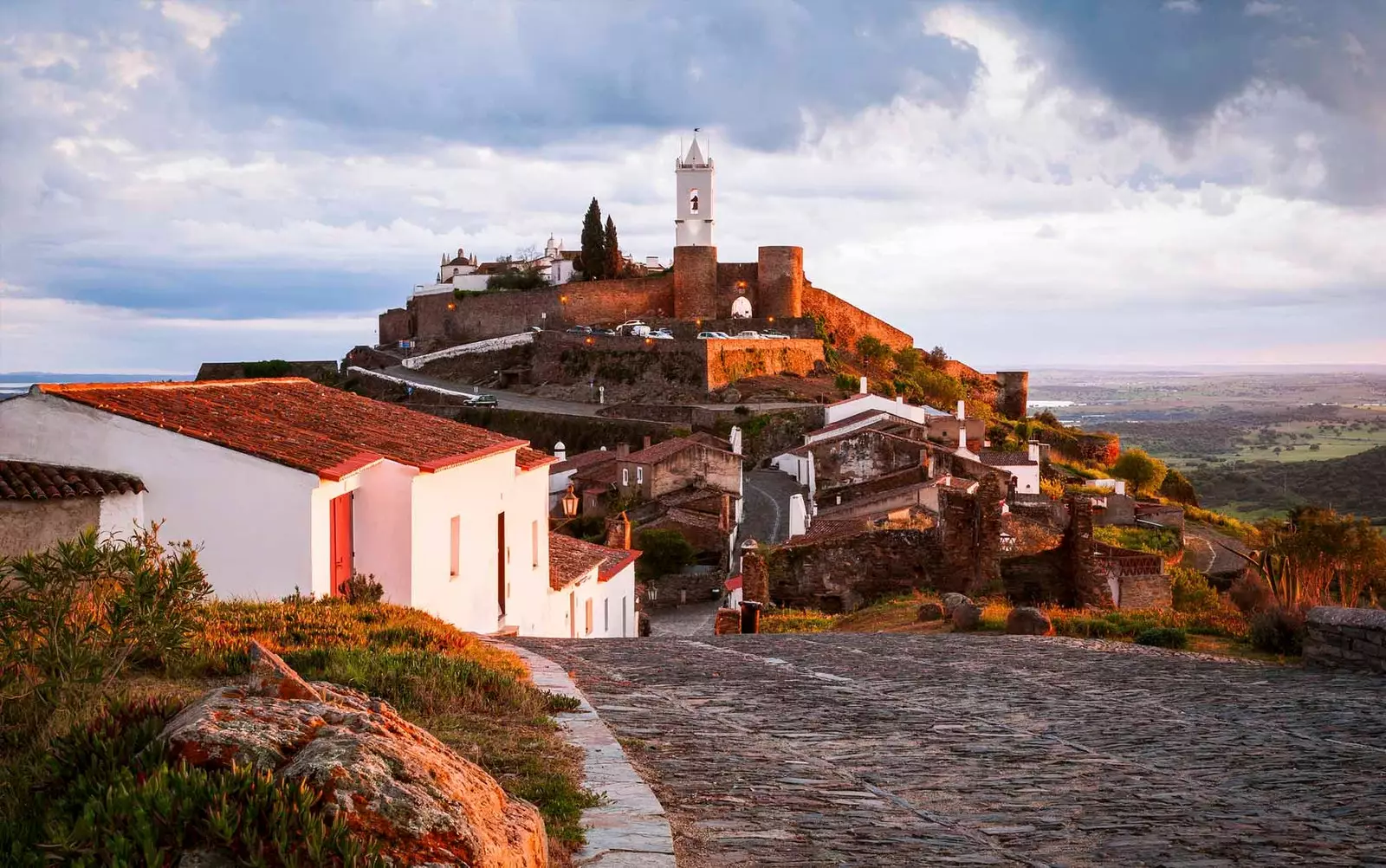
medieval scene
Estremoz is a place almost mystical for the Portuguese because here died, in 1336, the queen Elizabeth of Portugal , saint from 1625 . She was an Aragonese, daughter of a king, who married Denis I of Portugal, man dedicated to culture, founder of the University of Coimbra and song writer.
She, meanwhile, was dedicated to the poor and to avoid family fights-she had to intervene in the wars between her husband and her son Alfonso IV- . She is even told that she came to the battlefield and put herself in the middle of both sides to pray . Years later she had to do the same between her son, already king of Portugal, and her grandson Alfonso XI , descendant of a daughter who had married the Castilian king.
She was a saint, but with the offspring enraged and well placed!
Today we can sleep where the queen died holy, because the castle has become the Santa Isabel Pousada in her honor. The area of the rooms maintains the charm, and even some antique furniture, but it also has a modern swimming pool and a gastronomy in which, in addition to pezinhos de porco de coentrada (fritters made with pig trotters), there are some cakes with eggs and almonds that are called in honor of Isabel Rainha Santa.
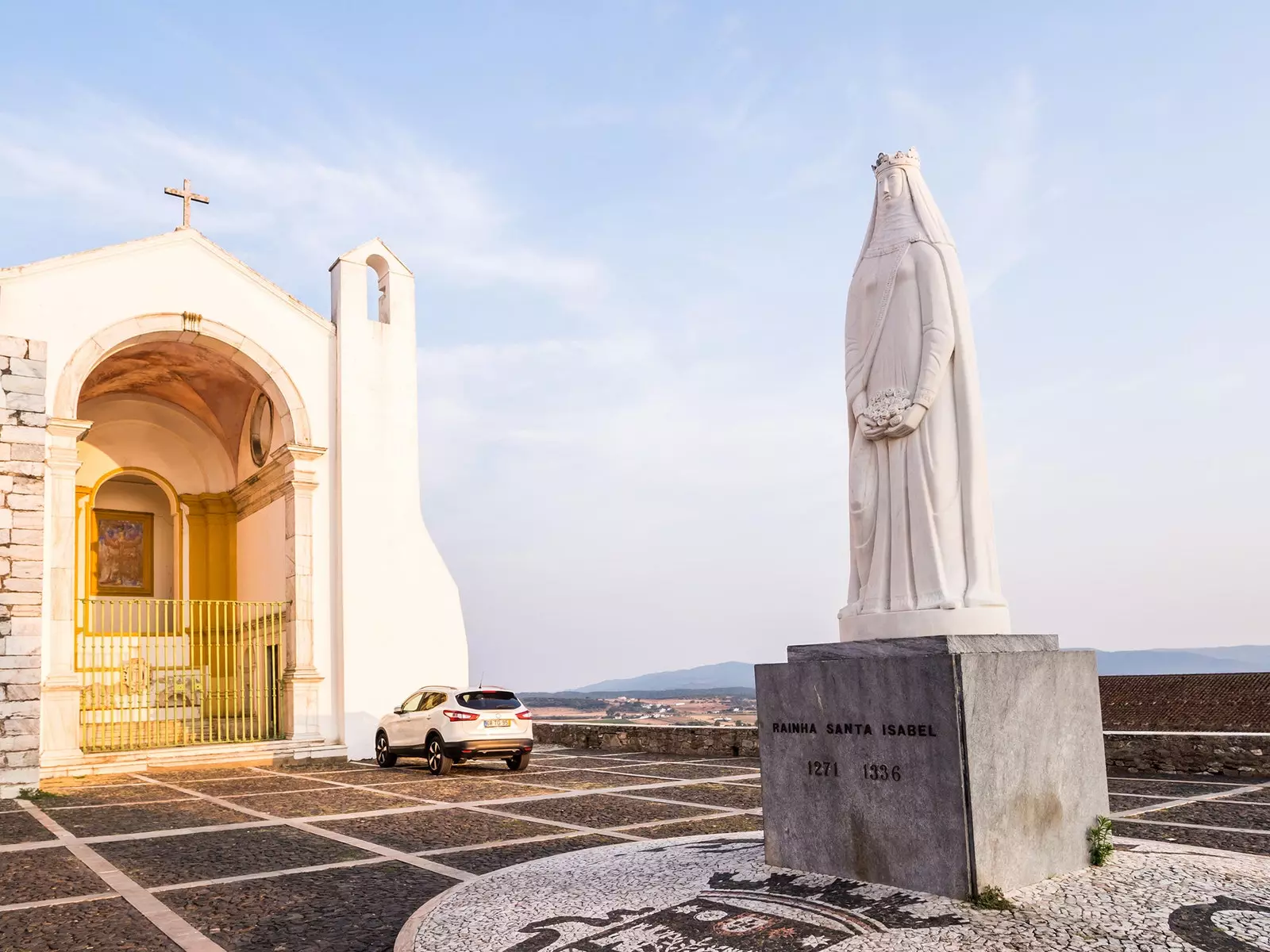
Estremoz
PORTUGUESE READINGS
For those who have been wanting to know more about the Aragonese emigrated to Portugal in the Middle Ages, Maria Pilar Queral del Hierro she wrote a few years ago fictionalized biography and a bit hagiographical, but very interesting, which she called The Rose of Coimbra . But if we only need to have a screenshot of this interesting country, Carlos Taibo published in 2015 Understand Portugal , where she explains everything from its history and gastronomy to its soccer.
And, of course, it is also advisable to review the most beloved portuguese authors in Spain: Antonio Lobo Antunes and Jose Saramago. Indeed, Pereira holds , despite the Portuguese setting is by Antonio Tabucchi, an Italian writer
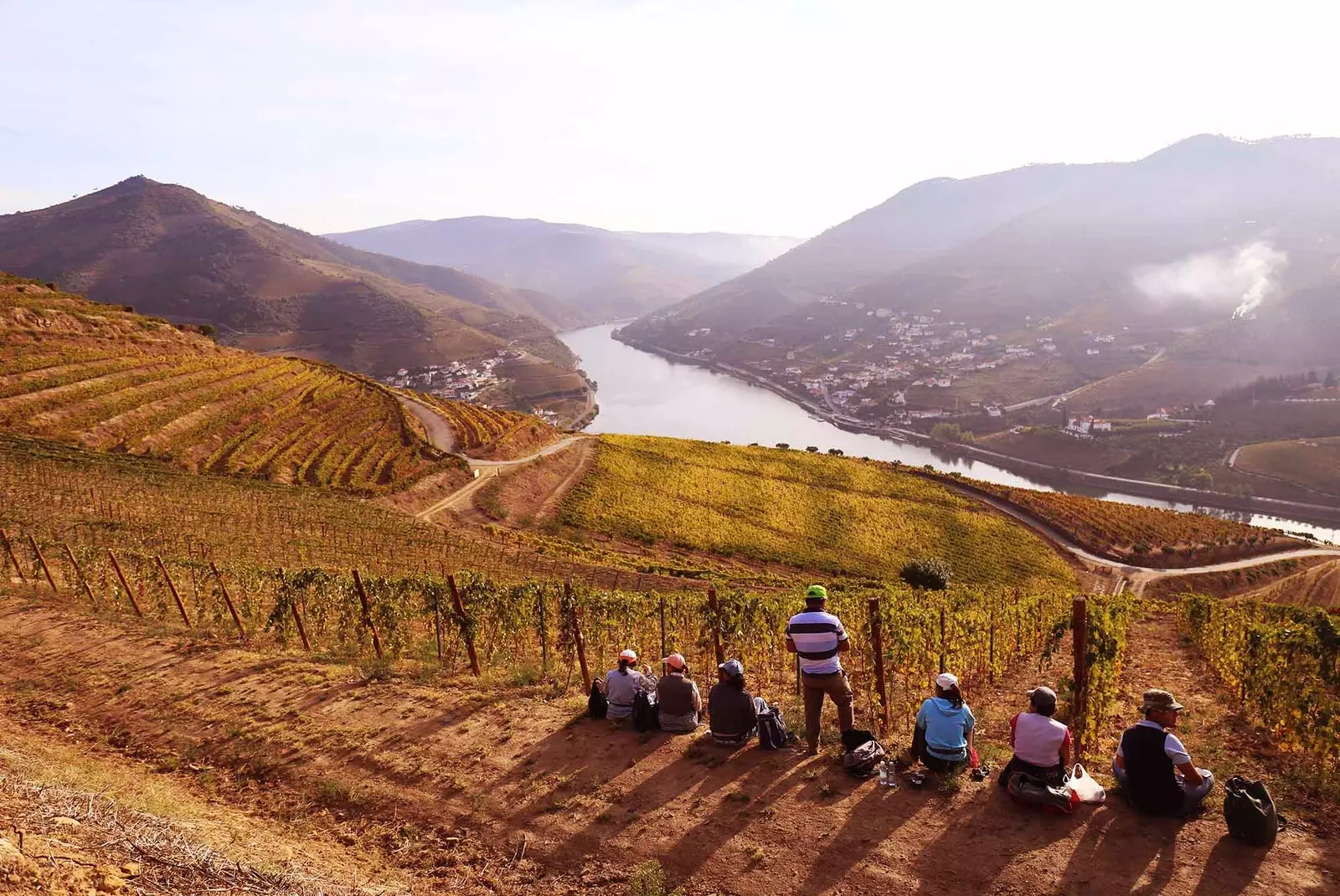
a perfect trip
